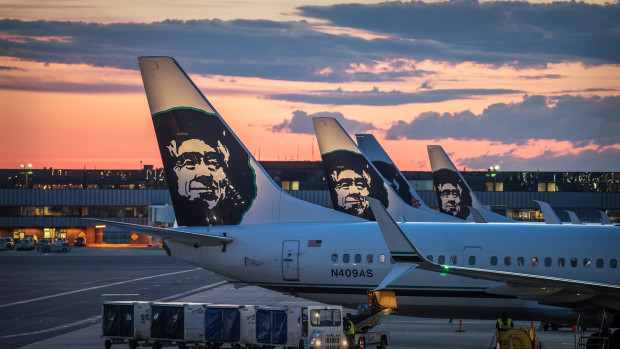
With this kind of excitement, who needs the inflight movie?
Getting there may be half the fun, but air passengers may find the fun factor severely fractured if they're screaming for their lives while they're coming in for a landing.
Touching down at some airports in this world can be downright terrifying, what with treacherous winds, ridiculously short runaways, and uncomfortably close proximity to large bodies of water or urban areas.
Take a spin on one of these high-flying hell rides and you may never complain about airplane food ever again.
A quick Google search of the phrase "world's most challenging airports" turned up such locations as Kansai International Airport in Japan, New Zealand’s Wellington International Airport, Lukla Airport in Nepal, and San Diego International Airport.
Juneau International Airport's name doesn't readily come up in these listings, but the aviation news publication Simple Flying says the facility is extremely challenging in its own right.
Great views, scary winds
Located 8.6 miles from the state’s capital, Juneau Airport is situated just off a channel of cold water flanked on all sides by steep snow-capped mountains and glaciers.
While Juneau International Airport is often regarded as one of the most scenic airports in the world, it is also notorious for the wind-driven turbulence that can make even experienced fliers beg for a barf bag.
During World War II, Juneau Airport was used by the U.S. Army Air Force as a transport link between the combat bases being established in the Aleutians and airfields in the U.S. mainland.
The airport was also used by Air Transport Command and facilitated the transport of Lend-Lease aircraft to the Soviet Union through Nome. In 1947, Pan Am became one of the first major airlines to serve Juneau.
Juneau Airport is the third-busiest airport in Alaska after Anchorage and Fairbanks. In 2022, the airport welcomed about 671,000 passengers.
Crammed between a 3,000-foot peak, the airport is at the end of Gastineau Channel, infamous for shifting winds and dense fog.
Tragedy struck the area in 1971 when an Alaska Airlines (ALK) -) plane crashed into a mountain on approach to Juneau, killing 111 people on board. At the time, it was the worst single-plane accident in U.S. history.
The National Transportation Safety Board blamed confusing instrumentation and pilot error.
Creating a framework
In 1993, an Alaska Airlines 727 took off into the wind and began its turn when it was hit by a blast of wind combined with a wind wave off the mountains.
The gust knocked the 727 on its side and hurled the jet toward the ground, but the crew regained control with only 150 feet to spare.
Researchers at the Federal Aviation Administration, Alaska Airlines, and the National Center for Atmospheric Research are the Juneau Airport Wind System (JAWS), which was implemented in 1997 and monitors wind shear and turbulence data in the area and relays the information to the air traffic controllers.
U.S. Secretary of Transportation Pete Buttigieg was a recent visitor to Juneau International Airport and a victim of local weather when his flight from Juneau to Haines was rained out, forcing him to board a ferry.
Buttigieg and Senator Lisa Murkowski spoke at the airport on August 16.
On the subject of updating weather and navigational aids, Buttigieg said "we can't control the weather but we can improve access to weather data."
"This is message we heard loud and clear from a number of the stakeholders that we've met in every part of our visit," he said, adding that the FAA Reauthorization bill "that's in front of Congress right now would create a framework that would help us to get more of that work done."







